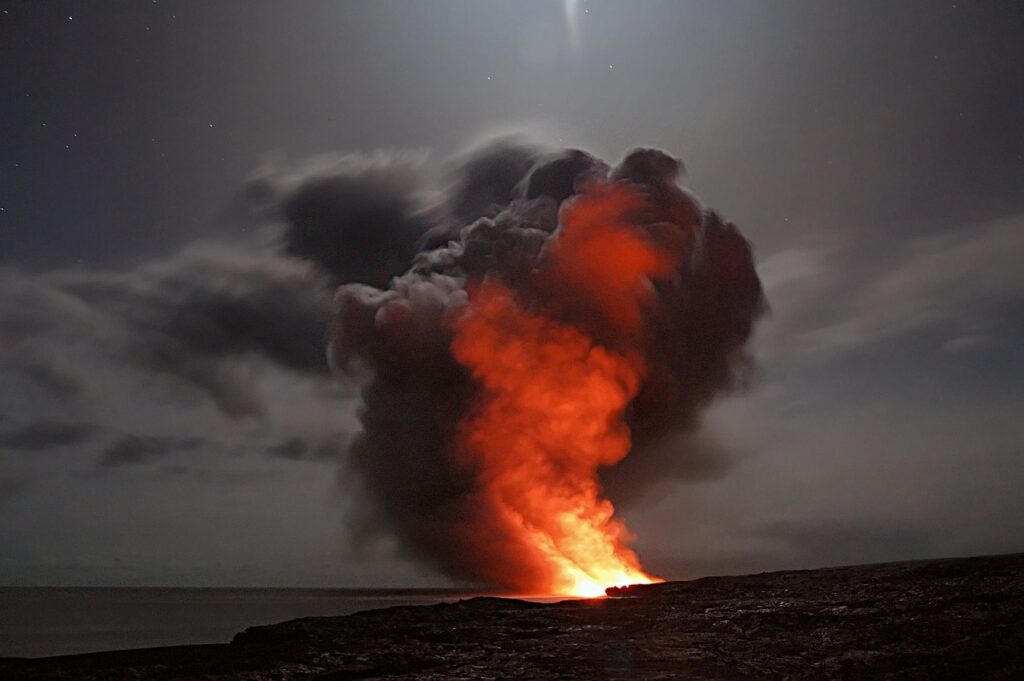What are super volcanoes? Can they erupt again?
3 min read
Super volcanoes! The name alone sounds like something out of a blockbuster movie, right? And indeed, if a super volcano were to erupt, it would be a real-life drama with global impact. But what exactly sets super volcanoes apart from regular volcanoes, and could one erupt again? Let’s explore these geological giants step by step.
The Extraordinary Scale of Super Volcanoes
First, let’s talk about what makes a super volcano “super.” While ordinary volcanoes spew out a considerable amount of lava, ash, and gases, the volume is not even close to what a super volcano can discharge. A super volcano eruption is like a volcano’s eruption, but dialed up to an unimaginable scale. Think of a volcano as a fireworks display, and a super volcano as the grand finale that lights up the whole sky.
A super volcano can eject more than 240 cubic miles (1,000 cubic kilometers) of material in a single eruption. That’s enough to fill up Lake Erie—twice! These eruptions can change climates and even trigger what’s known as a “volcanic winter,” where ash and particles in the atmosphere block sunlight, causing temperatures to drop worldwide.
The Anatomy of a Super Volcano: It’s Not Always a Mountain
Unlike regular volcanoes, which often look like mountains with a hole at the top, super volcanoes don’t always have an obvious mountainous structure. Sometimes they appear as gigantic holes in the ground, known as calderas. After a super volcano erupts, the ground above the magma chamber collapses, creating these enormous depressions.
Where Are They?
Several known super volcanoes exist today, with some of the most famous being Yellowstone in the United States, Toba in Indonesia, and Taupo in New Zealand. These locations may seem tranquil and beautiful now, but they hold an explosive past beneath their serene exteriors.
Will They Erupt Again?
Now, let’s talk about the million-dollar question: can super volcanoes erupt again? The answer is, technically, yes. But before you start packing your emergency kit, it’s crucial to know that the likelihood of a super volcano eruption happening in our lifetime, or even in the next few thousand years, is extremely low.
Scientists closely monitor these sites for signs of potential eruptions, such as increased seismic activity or changes in gas emissions. If a super volcano were to become active again, it would be a gradual process, likely providing some warning—though how much warning is a subject of much debate among scientists.
The Consequences: Not Just a Local Affair
The eruption of a super volcano would not be a local or even a national event—it would be a global catastrophe. Ash clouds could circle the Earth, blocking sunlight, affecting agriculture, and making air travel almost impossible. Climate patterns could be altered for years, if not decades.
Final Thoughts
Super volcanoes are awe-inspiring and a little terrifying, capturing our imagination as both magnificent natural phenomena and potential doomsday triggers. While the possibility of another super eruption exists, it’s important to balance our awareness of their devastating potential with the understanding that such an event is highly unlikely in the foreseeable future.
So, when you hear the term “super volcano,” think of it as a marvel of Earth’s complex geology. It serves as a humbling reminder that our planet has incredible power, capable of shaping and reshaping itself—and everything on it—in ways that are beyond our everyday comprehension. But for now, these sleeping giants seem content to slumber, while scientists keep a watchful eye for any signs of a rude awakening.



